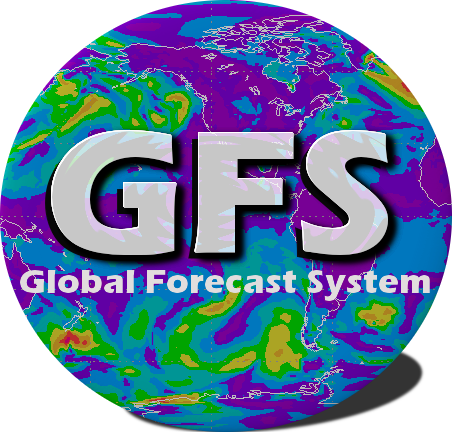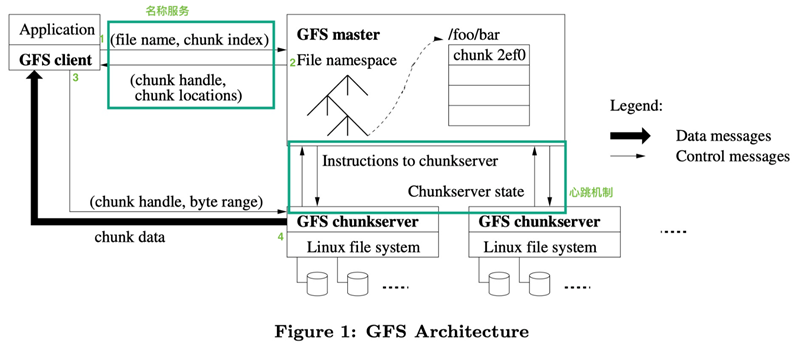What Is The GFS Hurricane Model? A Look At How We Track Storms
When tropical weather stirs, many people turn to weather forecasts to understand what might happen. It's a natural thing to do, you know, wanting to be prepared for what's coming. One name that often comes up in these conversations, especially during hurricane season, is the GFS model. It's a really important tool, and frankly, a lot of folks wonder what it actually is and how it works.
This particular model, the GFS, plays a truly big part in how we predict and get ready for natural events, including, like, those powerful hurricanes, and even things such as floods or wildfires. Its more advanced ensemble forecasts, in a way, give us really helpful looks into how likely these events are and, you know, how severe they might be. So, it's pretty crucial for staying safe.
In this discussion, you will find out what the GFS weather model is, how it works its magic, and where you can actually find the weather forecast information it provides. We'll explore its purpose, its funding, and even some of its known characteristics, because, well, it's good to know the details, right?
Table of Contents
- What is the GFS Model?
- Who Runs the GFS?
- How the GFS Model Works
- Accessing GFS Forecasts
- GFS Performance and Biases
- The Bigger Picture of Forecasting
- Frequently Asked Questions About the GFS Model
What is the GFS Model?
The Global Forecast System, or GFS, is, in essence, a global numerical weather prediction system. It's quite a mouthful, but it basically means it's a very big computer system that tries to figure out what the weather will do all over the planet. This system, you know, contains a global computer model and something called variational analysis. It's all run by the United States' National Weather Service, which is part of the government, as a matter of fact.
This GFS model is, arguably, the global model that the U.S. government runs. It operates under the guidance of the National Oceanic and Atmospheric Administration, or NOAA, and its various agencies that are part of it. So, it's a big, government-backed effort, and that's pretty significant, you know.
One really neat thing about the GFS model, and this is quite important, is that it's actually funded by American taxpayers. What that means for you and me is that its forecast output, all the information it produces, is freely available to anyone who wants to use it. You don't have to pay a dime to see what it's predicting, which is, well, pretty great for public safety, as a matter of fact.
Who Runs the GFS?
The GFS model, as we just touched on, is operated by the United States' National Weather Service, or NWS. This agency is a key part of the National Oceanic and Atmospheric Administration, which we know as NOAA. So, basically, it's a government-run operation, and that's how it gets its funding and, you know, its official backing.
NOAA, under whose leadership the GFS runs, has a very important job. Their mission is, in a way, to save lives, to help lessen property loss, and to actually improve the nation's economy. They do this by putting out the very best forecasts for hurricanes and other types of hazardous tropical weather. The GFS is, truly, a core tool in that vital mission, you know, to keep people safe.
It's interesting, too, that NOAA's National Hurricane Center, which is the NHC, and Google LLC are, apparently, working together. They're teaming up to get the most out of a new artificial intelligence, or AI, weather forecast model. This partnership is all about helping NOAA do its job even better, which, you know, includes issuing those crucial forecasts. So, the commitment to better forecasting is pretty clear.
How the GFS Model Works
The GFS is, you know, a global computer model, and it uses a lot of complex math and physics to predict what the atmosphere will do. It takes in a massive amount of current weather observations from all over the world. These observations come from satellites, weather balloons, ground stations, and, like, even ships. It then uses these initial conditions to project how the weather will change over time, which is, you know, how a forecast is made.
It's important to remember that the GFS is what's called a hydrostatic model. This means it makes certain assumptions about how pressure changes with height in the atmosphere. These assumptions, in a way, simplify the calculations, which allows the model to cover the entire globe. However, it also has some implications for its accuracy, especially at very fine scales, as a matter of fact.
The model, you know, runs multiple times a day, typically every six hours. Each time it runs, it produces a new forecast that extends far into the future, sometimes out to 16 days or even more. These regular updates are pretty important, as they allow forecasters to see how the weather patterns are evolving and, you know, to adjust their predictions accordingly.
GFS vs. Other Models
When we talk about weather models, the GFS is often compared with others, most notably the ECMWF model, which is sometimes called the "European model." There's a pretty key difference between them. The ECMWF is a nonhydrostatic model, which, you know, generally works better at lower, more detailed weather grid resolutions. This means it can sometimes capture smaller-scale weather features a bit more precisely.
On the other hand, the GFS is, as we mentioned, a hydrostatic model. This characteristic, in some respects, means it is generally considered to be, you know, somewhat less accurate at predicting the weather, especially when compared to its nonhydrostatic counterparts at those finer resolutions. However, it's important to remember that "generally worse" doesn't mean "always wrong," as a matter of fact.
Interestingly enough, in a recent period, like, last year, the GFS was actually the best performing track model when it came to hurricanes. It was, arguably, even better than the European model for tracking where storms would go. This just goes to show that while models have their general strengths and weaknesses, their performance can vary, and, you know, they all contribute valuable insights.
The Role of Ensemble Forecasts
The GFS model, you know, doesn't just produce one single forecast. It actually creates what are known as advanced ensemble forecasts. What this means is that the model is run multiple times, but each time with slightly different starting conditions. Think of it like, you know, running the same race many times with tiny variations at the starting line, as a matter of fact.
These different runs create a "suite" or "ensemble" of possible outcomes. By looking at all these different possibilities, forecasters can get a much better idea of the range of what might happen. If many of the ensemble members show a similar outcome, then, you know, there's a higher confidence in that particular forecast. If they show a lot of different outcomes, then the forecast is less certain, which is pretty useful to know.
These ensemble forecasts are, truly, valuable. They provide important insights into the likelihood and the potential severity of natural events like hurricanes, floods, and wildfires. They help specialists understand not just what the weather might do, but also, you know, how confident they can be in that prediction. So, they're a really big part of how the GFS helps with preparedness.
Accessing GFS Forecasts
Since the GFS model is funded by American taxpayers, its forecast output is, as we noted, freely available to anyone who wants it. This is a huge benefit, as it means you don't need special access or subscriptions to see the data. There are many places online where you can find GFS forecasts, presented in various ways, as a matter of fact.
Our own model site, for example, actually displays National Hurricane Center, or NHC, model data in Google Earth. This is for active storms and also for areas of investigation, which are, you know, designated as "invests" with numbers from 90 to 99. It's a way to bring all that important information into one place, so you can, like, keep up to date on any threats to land during the Atlantic hurricane season, as a matter of fact.
The main goal of our site, you know, is to bring all of the important links and graphics to one spot. This way, you can easily monitor the tropics, get hurricane tracking information, see various tropical models, and find more storm coverage. It even includes, you know, exclusive satellite and radar coverage of Florida, the Gulf of Mexico, and the Caribbean. It's really about making things simple for you.
You can learn more about hurricane tracking on our site, and, you know, also find more information on tropical models.
Important Considerations for GFS Data
While the GFS data is freely available, there are some rules about how it can be used, particularly if you're thinking about displaying it yourself. For example, having the latest run of the GFS persistently displayed on your own webpage is, you know, disallowed. This is to ensure that official sources remain the primary point of reference for the most current and interpreted forecasts, as a matter of fact.
It's also worth remembering that numerous objective forecast aids, which are often called guidance models, are available to help the NHC hurricane specialists. These specialists, you know, use many different models, including the GFS, to prepare their official track and intensity forecasts. They don't rely on just one model, which is pretty important for accuracy.
So, while you can view GFS output, it's always best to consult the official forecasts from the National Hurricane Center. Their specialists, you know, take all the model data, along with their own expertise and experience, to give you the most reliable information. It's like, they put all the pieces together for you, which is very helpful, you know.
GFS Performance and Biases
Every weather model, you know, has its strengths and its quirks, and the GFS is no different. As we mentioned earlier, last year, the GFS was actually the best performing track model for hurricanes, which is pretty impressive, especially when compared to the European model. This shows that it can be, you know, very good at predicting where a storm will go.
However, it's also known that the GFS has a specific tendency, or a known bias, in certain regions. Specifically, it has a known bias in Central America and the Caribbean. This means that, in those particular areas, its forecasts might consistently lean in one direction, or, you know, show a slight error pattern that forecasters need to be aware of. Knowing about these biases is, frankly, crucial for making the best predictions.
Forecasters, you know, are very aware of these characteristics. They use their knowledge of the model's past performance and its known biases to interpret the GFS output more accurately. So, while the model provides the raw data, the human specialists add that layer of interpretation that's, like, absolutely necessary for a reliable forecast.
The Bigger Picture of Forecasting
The GFS model, in a way, is just one piece of a much larger puzzle when it comes to predicting weather and, you know, preparing for natural events. It's a truly vital component, yes, but it works alongside many other tools and, of course, the expertise of human forecasters. It's not just a single thing, but a whole system, as a matter of fact.
The goal, really, is to bring everything you need to monitor the tropics into one convenient place. This includes not just the GFS, but also other hurricane tracking tools, various tropical models, and, you know, more storm coverage from different sources. It's about having a comprehensive view, which is pretty important when lives and property are at stake.
For example, having access to numerous objective forecast aids, or guidance models, is incredibly helpful for National Hurricane Center specialists. These aids, including the GFS, help them prepare their official track and intensity forecasts. They use all these pieces of information, you know, to make the best possible predictions, which is, truly, their main job.
The entire effort, from the GFS model itself to the specialists who interpret its data, is all about advancing NOAA's mission. That mission is, you know, to save lives, to lessen property loss, and to improve the nation's economy. It's a big responsibility, and the GFS plays a critical role in supporting it, as a matter of fact.
Frequently Asked Questions About the GFS Model
Here are some common questions people often have about the GFS hurricane model:
What does "hydrostatic model" mean for the GFS?
A hydrostatic model, like the GFS, basically means it uses a simplified way to calculate how air pressure changes as you go up in the atmosphere. This makes it, you know, faster to run for global forecasts. However, it can sometimes be less precise for very small-scale weather features compared to nonhydrostatic models, which are, like, more detailed in their calculations.
Is the GFS model always accurate?
No model is, you know, always perfectly accurate. While the GFS has shown strong performance, even being the best track model last year for hurricanes, it does have known biases, such as one in Central America and the Caribbean. Forecasters use their expertise to account for these tendencies and combine GFS data with other models for the most reliable predictions, as a matter of fact.
Can I use GFS data on my own website?
The GFS model's forecast output is freely available because it's funded by taxpayers. However, there are rules. For example, you are not allowed to persistently display the latest run of the GFS on your own webpage. It's always best to refer to official sources like the National Hurricane Center for the most current and interpreted hurricane forecasts, you know, for public safety.

GFS

大数据通识:Google GFS – 标点符

GFS-logo – Menno Place